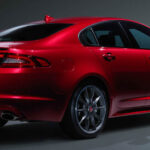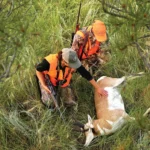For Canadians looking to explore the tough trails and steep inclines of the Great White North, electric mountain bikes (eMTBs) offer a unique combination of power, efficiency and simplicity. They have all the technology and components of a typical mountain bike, but with a motor and battery designed specifically for tough, steep terrain. Check out our handy guide.
Electric Mountain Bike Basics
eMTBs are bikes with small motors powered by a rechargeable battery, allowing riders to pedal on demand. eMTBs have various benefits that enhance your off-road activities. The powerful motors soften the impact of steep climbs, allowing you to ride for extended periods of time without tiring. Those extra watts also allow you to stay up with better riders on the trails and reach isolated locations not served by chairlifts or shuttle roads. More laps, more miles, less time, and less work.
Electric mountain bikes are easy to use on the terrain. eMTBs include a user-friendly controller for switching between pedal-assist levels and checking battery health. The electrical components are almost completely integrated into the frame to protect them from the environment and hazards on the trail. To turn on the bike, push a button on the controller near the handlebars. Begin pedaling, and the motor will softly kick in-riders can choose the level of assistance they require. Most eMTB motors turn off automatically after a certain amount of time without pedaling, but they can also be turned off manually. Remember to recharge the battery once you’ve finished riding.
How Should I Choose an Electric Bike?
There are a variety of Mountain eBikes available these days. That means there is a model out there for everyone, but finding the correct one might be challenging. To take the uncertainty out of choosing an eMTB, consider where and how you prefer to ride. These criteria will influence the type of eMTB you should look for. You can explore top mountain eBikes at Zeus Ebikes Canada for additional models and detailed specifications.
From there, you can determine how much power you need and consider factors such as battery capacity, suspension, and frame material. All electric bikes are classified into three categories based on their maximum speed and power modes. It is critical to select the appropriate class to meet your needs. Check the laws and regulations of your local trails to determine if there are any limits on specific ebike classes.
Class 1
eMTBs are popular among serious riders and may be used on most trails. They are also what we propose at Summit Bicycles.
Class 2
This type of eMTB also includes a throttle for pedal-free riding, however in terms of trail performance, these models cannot compete with class 1 models produced by major companies such as Trek, Santa Cruz, Yeti, and others. Note that Summit Bicycles does not sell class 2 e-bikes.
Class 3
Class 3 eMTBs have higher top speeds but are forbidden on some routes. They are often better suited to vast open dirt roads than tiny, tricky trails.
Mountain eBikes Motor

Mid-drive systems are the current standard for high performance eMTBs. They distribute weight and climb more efficiently than older rear hub motors because the motor’s central position in the bottom bracket maintains a natural center of gravity. If you’re serious about trail riding, use a mid-drive motor.
Watts are the unit of measurement for eMTB motor power. While more watts means the motor can go faster, most high-end eMTBs have settled on 250 watts as the sweet spot between having enough juice to get up the climbs and feeling like a mountain ebikes rather than an overpowered commuter bike.
Torque is an important metric that affects performance on steep climbs or when hauling heavy loads. The maximum torque of an eMTB engine can range from 40 Nm to 80 Nm. If you want to fly uphill, you’ll need more torque. But if you’re looking for a more natural feel, you won’t need as much.
All eMTB motors feature multiple levels of assistance that you can switch between. Some include a “walk” mode that slowly pulls the bike forward, which is useful for steep hike-a-bike sections. Some motors even have clever settings that alter help based on the terrain you’re riding in.
eMTB batteries are incorporated into the frame’s downtube and may be fully charged in only a few hours when riding or off. Battery capacity is measured in watt hours (Wh), which commonly ranges from 540Wh to 900Wh.
The distance you can travel on a single charge (also called as range) of the battery is determined on the pedal-assist mode you select (as well as terrain, rider weight, and so on), and there is frequently an Eco setting to save battery in addition to more powerful output modes.
Larger batteries provide longer ranges, but also add weight. So you’ll have to decide how significant maximum range and weight reductions are to you.
Electric Mountain Bike Controller
eBikes bike controllers are compact gadgets that sit near the handlebar grip and allow users to effortlessly choose between pedal-assist settings using their thumb. Some controllers also switch the bike’s power on and off, but that button may be located elsewhere on certain models. This modest piece of hardware connects to the more interactive and adjustable screens in the cockpit’s center. All high-end eMTB controllers are fairly sleek, and whatever of the type you choose, you’ll like the easy functionality.
Mountain eBbikes Bicycle Display
eMTBs have handlebar or frame-mounted LCD displays that deliver ride statistics and bike analytics at your fingertips. Most screens include useful information such as battery life, pedal-assist mode, distance driven, speed, and more. Some luxury panels come in color and are compatible with smartphone apps and GPS services. Examine the display characteristics of the eMTB you’re considering and choose which ones are most important to you.
When choosing a mountain e-bike, consider this:
l Fat tires, usually 4 inches in diameter or wider, provide better traction and stability on loose and uneven surfaces.
l A strong and lightweight frame, such as aluminum or carbon fiber, ensures the bike can handle challenging trails without being too heavy.
Top Mountain eBikes for Canadian Trails
1. Ridstar Q20 Pro Dual Motor 2000W Retro Ebike
Ridstar Q20 Pro is a powerhouse. The dual 2000W motors on this eBike make steep hills and uneven pathways easy. The nostalgic look evokes traditional mountain bikes, yet its performance is modern. Fat tires provide good traction, and the high-capacity battery assures you won’t get stuck on your expedition.
2. Aostirmotor S18-1500W Fat Tire Mountain Ebike
The Aostirmotor S18 is for serious mountain bikers. Its 1500W motor can handle any path, and its thick tires and sturdy suspension assure a comfortable ride. The bike’s lightweight, robust frame is suited for extended rides in Canada’s tough environments. It also has a high-capacity battery and smart braking system for safety.
3. Himiway D7 Pro Mid-Drive Full Suspension EMTB
For those looking for a high-end option, the Himiway D7 Pro is hard to beat. This mid-drive eBike’s powerful motor and full suspension make it ideal for rough mountain terrain. The large tires provide good traction in all conditions, and the high-capacity battery extends range. The Himiway D7 Pro performs well and is comfortable on steep hills and uneven paths.
Visit Zeus Ebikes Canada for more Top Mountain eBikes, models and detailed specifications.
Read Also Following Top 10 Best Headphones








